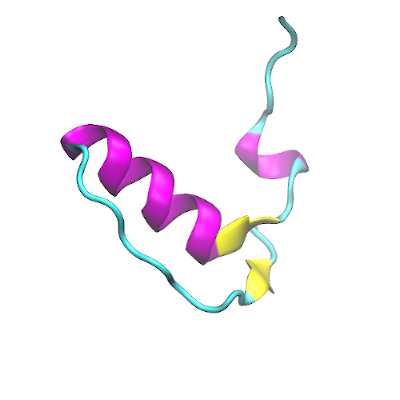ORF10

Within SARS-COV-2, ORF10 is thought to not have any functional protein purpose as it was not found within sub genomic mRNA sequencing. In another study, ORF10 might hijack components of the ubiquitination machinery and degradation. ORF10 of SARS-COV-2 is the last and the shortest predicted coding sequence upstream of the poly-A tail. ORF10 is predicted to harbor a long helix and then parallel ϐ-sheets. ORF10 is not found within the SARS-CoV-1 proteome, making it unique to SARS-COV-2.
Narrative
Within SARS-CoV-2, ORF10 is thought to not have any functional protein purpose as it was not found within the sub genomic mRNA sequencing (Taiaroa et al., 2020). It’s hypothesized that this protein may act itself or as a precursor of additional RNAs in roles concerning gene expression, controlling cellular antiviral pathways, or within viral replication (Taiaroa et al., 2020). Another hypothesis is that this protein, if not an artifact, could be involved with regulating molecular function or contributing to response stimulus based on DeepGOPlus Gene Ontology (Alam et al., 2020). In another study, based on the SARS-CoV-2 interactome, ORF10 is suggested to interact with a Cullin 2 RING E3 ligase complex (D. E. Gordon et al. 2020). Potentially, ORF10 might bind specifically to Cullin 2 ZYG11B complex and hijack this complex for ubiquitination and degradation. It appears to localize only within the extracellular region of the host (Alam et al., 2020)
Structural analysis of SARS-CoV-2 ORF10 – ORF10 of SARS-CoV-2 is the last predicted coding sequence upstream of the poly-A tail and is the shortest predicted coding sequence, composed of 38 a.a. (Taiaroa et al., 2020) ORF10 is predicted to harbor a long helix and a pair of ϐ-strands. ORF10 is not found within the SARS-CoV-1 proteome (Taiaroa et al., 2020) It appears to be unique to SARS-CoV-2.
